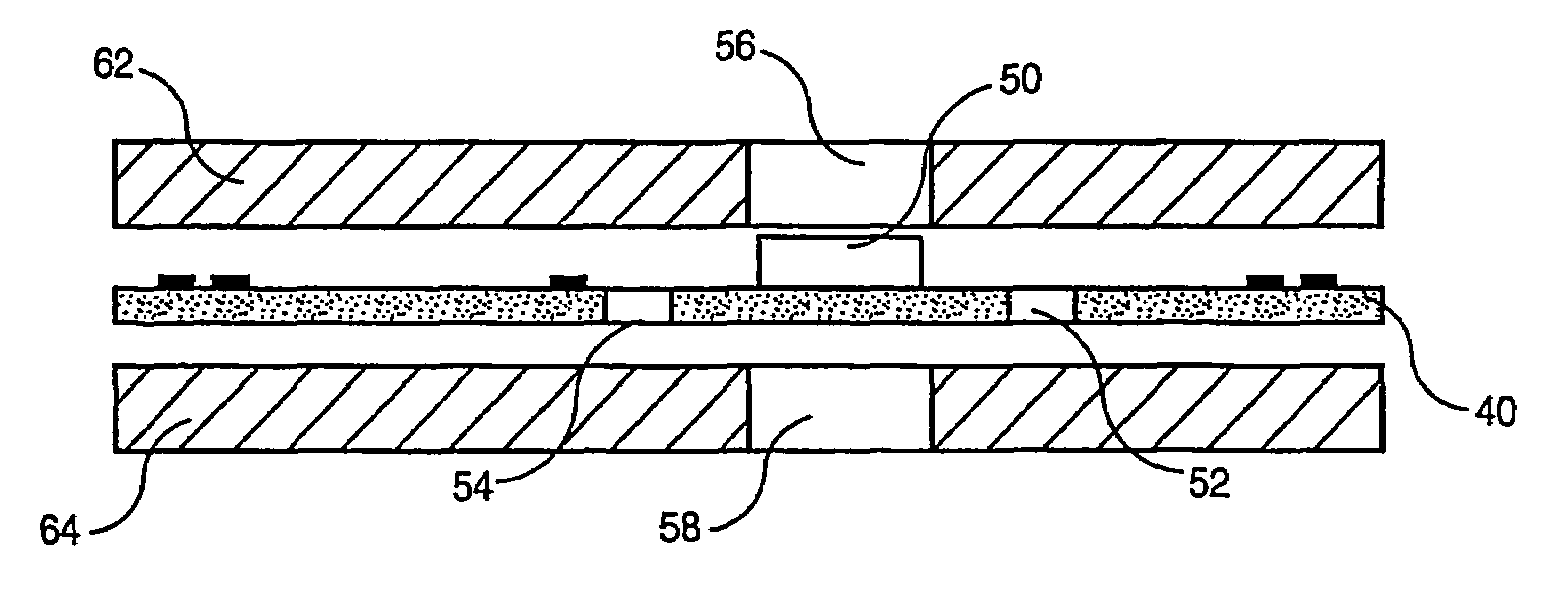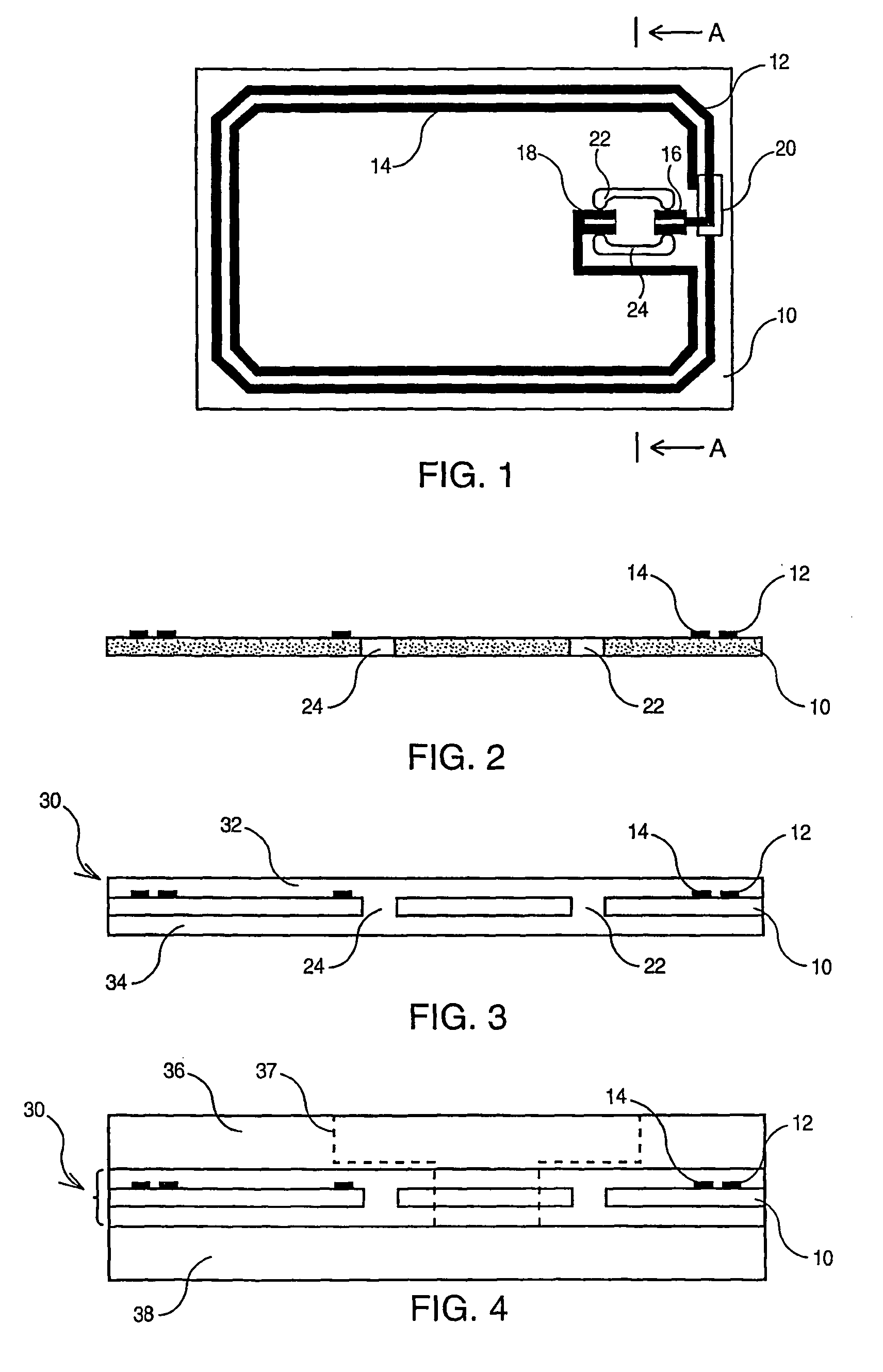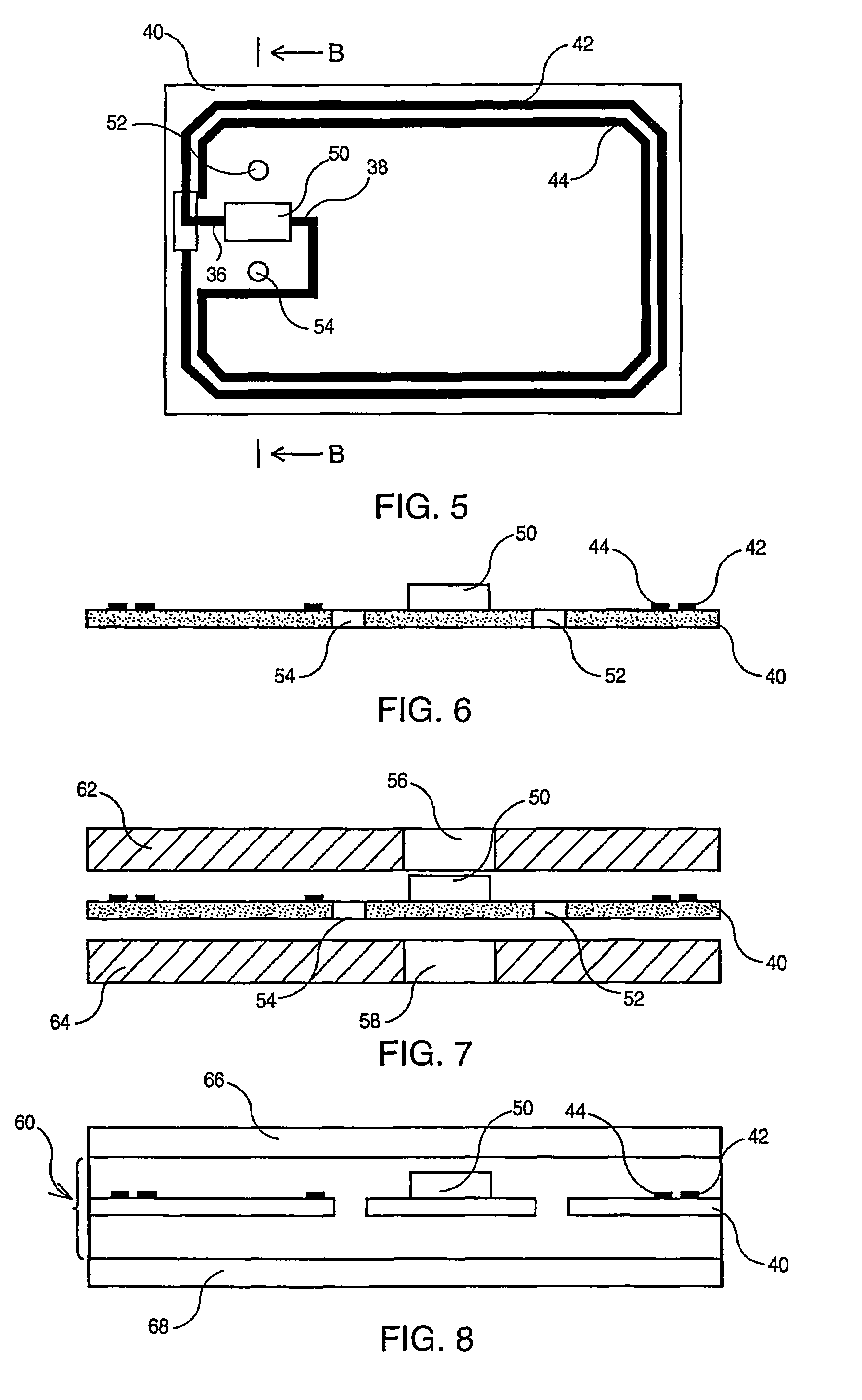Method of producing a contactless chip card or a contact/contactless hybrid chip card with improved flatness
a hybrid chip card and chip card technology, applied in the field of manufacturing a contact/contactless hybrid chip card with enhanced evenness, can solve the problems of over-the-counter methods with aesthetic disadvantages, darkening of colours, and manufacturing methods of contactless cards
- Summary
- Abstract
- Description
- Claims
- Application Information
AI Technical Summary
Benefits of technology
Problems solved by technology
Method used
Image
Examples
Embodiment Construction
[0027]According to a preferred embodiment of the invention illustrated in FIG. 1, the antenna support is made of fibrous material such as paper and has a thickness of approximately 90 μm. The manufacture of the chip card according to the invention consists firstly in producing the antenna on its support 10. The antenna is made up of two loops 12 and 14 of screen-printed polymer conductor ink, containing conductive elements such as silver, copper or carbon. Each loop has one of its ends linked to one of the bonding pads of the antenna which are also screen-printed, loop 12 being linked to pad 16 and loop 14 to pad 18. The loops are interlinked by an electric bridge more commonly known as a cross-over (not shown in the figure) An insulating strip 20 of dielectric ink is screen-printed between the cross-over and loop 12. The electronic module containing the chip is inserted into the card at the last manufacturing step of the contact / contactless hybrid card. The antenna design is revers...
PUM
| Property | Measurement | Unit |
|---|---|---|
| temperatures | aaaaa | aaaaa |
| temperature | aaaaa | aaaaa |
| thickness | aaaaa | aaaaa |
Abstract
Description
Claims
Application Information
 Login to View More
Login to View More - R&D
- Intellectual Property
- Life Sciences
- Materials
- Tech Scout
- Unparalleled Data Quality
- Higher Quality Content
- 60% Fewer Hallucinations
Browse by: Latest US Patents, China's latest patents, Technical Efficacy Thesaurus, Application Domain, Technology Topic, Popular Technical Reports.
© 2025 PatSnap. All rights reserved.Legal|Privacy policy|Modern Slavery Act Transparency Statement|Sitemap|About US| Contact US: help@patsnap.com



